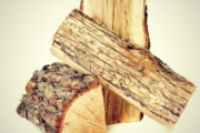3 Cost Comparisons For Alternative Heating Sources
 Winter has already hit some parts of this country and others are not far behind. With that brings cold weather and the need to heat our homes. Flipping the switch from off to heat, however, is a daunting choice for some folks because of the expense. But with a little investment and a lot of hard work, you can cut your heating bill from 50-100% and have a reliable heat source during power outages. Let me show you how.
Winter has already hit some parts of this country and others are not far behind. With that brings cold weather and the need to heat our homes. Flipping the switch from off to heat, however, is a daunting choice for some folks because of the expense. But with a little investment and a lot of hard work, you can cut your heating bill from 50-100% and have a reliable heat source during power outages. Let me show you how.
1. Heating with a Wood Stove
We purchased our wood stove for $700 ten years ago. Today, the same stove sells for around $1,600. That might be a big investment for some folks, but take into account that it could pay for itself in one season. Also, you can still purchase a used stove for under $1,000. Before installing a woodstove, however, you will want to check with your homeowner’s insurance agent. They will want specific information about the stove for your policy. Our agent came to the house to take pictures for our file to show that it was installed properly.
Wood stoves have many advantages. With a glass front door, you have the beauty of a fire in your living room. You also have a warm spot to go to when you get chilled. But the best part is the cost over the long haul. In ten years of heating with wood, we’ve only bought firewood once. Otherwise, we have been allowed to cut downed trees from other’s property.
Even if you have to purchase your firewood, a cord only costs around $100. All in all, I estimate we’ve saved around $12,000 over a ten-year period by not using our electric radiant heat.
2. Heating with a Pellet Stove
Pellet stoves burn wood pellets. According to Home Depot’s Buying Guide for Wood and Wood Pellet Stoves, “wood pellets typically come from either mills as scrap wood, furniture manufacturers, recycling centers, roadside scraps, nuts, sawdust logging residue or paper packaging plants.” They are dried and pressed into shapes that resemble rabbit food.
A pellet stove looks and costs much the same as a wood-burning stove. A 40-pound bag of pellets runs about $4 in my area and lasts about a day. One source from western New York says they spend about $1,300 per year for wood pellets. Even though it costs a little more than burning wood, some folks prefer the pellet stove because it is cleaner than wood. If this interests you, check with the stove manufacturer.
Some pellet stoves will burn other things like corn, making it advantageous in case of a pellet shortage and cheaper for those who live in a farming community and can buy corn from their neighbor for cheap. However, since a pellet stove requires electricity to run the auger that feeds the pellets and the fan that blows the warm air, you cannot rely on them during a power outage.
3. Heating with a Coal Stove
Not as popular as the wood or wood pellet stoves, the coal stove is still a viable option for those wanting an alternative to the typical electric or fuel heat. You can purchase a coal-burning stove for around $1,000 that will also burn wood. And since the cost of coal is comparable to that of the wood pellets, it is not any more costly. Like the woodstove, you can purchase a coal stove with a cooking surface on top that makes it a life saver in times of power outages.
Final Thoughts
Some areas of the country have outlawed burning wood and coal due to the emissions. You will want to check with the municipality in which you live before purchasing a stove. Also, you will want to make sure that your stove is properly installed according to the manufacturer’s directions with the proper clearances. If you purchase a used stove without an owner’s manual, check with an authorized woodstove installer or your local fire marshal.